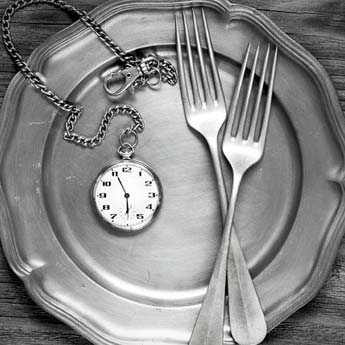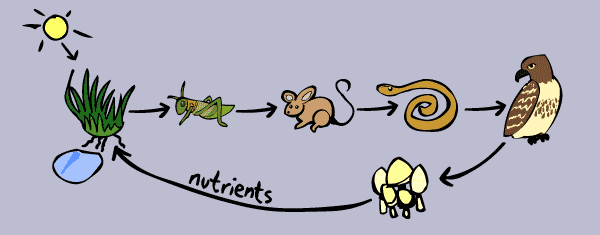Nutrition.
Nutrition is the simplest yet one of the more powerful lifestyle changes that you can make on your way to improved health, reduced stress, and greater physical performance. It is simple, but not at all easy. First, you have to reorient your view while contemplating nutritional intervention by peeling back technology, industry, and modern societal belief. The best indicator of what proper human nutrition is can be found in an evolutionary approach. That is to say, our past can be instructive to our present. To the best of our knowledge, we humans as a species have evolved over millions of years with certain environmental pressures that served to forge our current genetic makeup. Then, in a relative instant in time, our environment has radically changed due to industry and technology. The human genome is far slower to adapt to the novel environment it finds itself in. If you can understand this very simple but very important concept, the rest of this article will make some sense to you.
We are genetically mismatched to the lives we live, and this mismatch is causing problems for many individuals. The species, if given enough time, will adapt; but while that is occurring, individuals within the species will experience ill-health and disease—it is an expected part of the process. If you care about your health and fulfillment, you can’t wait for nature to adapt the human species. Many conditions that we classify as disease are not destinies needing a cure—they are the phenotypic expressions of the genetic mismatch. If you rematch gene to environment, the disease will abate. If you then again mismatch gene to environment, the disease will return. It’s not magic. Since, of the two, the environment is the variable that is in our power to change, it is lifestyle change and habits that can rematch gene to environment. If you eat in stride with your genetics, you will find health; if you eat against your genetics, you will find disease.
 While I have your mind open, let me begin with the most radical idea in nutrition: Fasting. Simply stated, fasting is “not eating”. Depending upon what, and the size of your last feeding, several hours afterward, your physiology will switch from the fed state to the fasted state. The fed state is associated with relaxation, absorption, anabolism, energy transfer “in”; and the fasted state is associated with alertness, catabolism, energy transfer out. During the fasted state, the body’s cells do some spring-cleaning, a sort of reconstruction that is most healthful. There are far too many studies elucidating the beneficial effects of fasting on mammalian organisms to ignore this very powerful health tool. And if you think about it, we humans, and the animals that we keep with us are the only organisms on earth that constantly feed—it is societal, not natural.
While I have your mind open, let me begin with the most radical idea in nutrition: Fasting. Simply stated, fasting is “not eating”. Depending upon what, and the size of your last feeding, several hours afterward, your physiology will switch from the fed state to the fasted state. The fed state is associated with relaxation, absorption, anabolism, energy transfer “in”; and the fasted state is associated with alertness, catabolism, energy transfer out. During the fasted state, the body’s cells do some spring-cleaning, a sort of reconstruction that is most healthful. There are far too many studies elucidating the beneficial effects of fasting on mammalian organisms to ignore this very powerful health tool. And if you think about it, we humans, and the animals that we keep with us are the only organisms on earth that constantly feed—it is societal, not natural.
Another well-studied dietary intervention is caloric restriction, one that also characterizes similar beneficial health effects. Fasting is not purposefully restricting energy intake; it is restricting feeding times only. There have been many authors and gurus who have boxed this no-cost intervention for sale to the public, and each have there own twist on fasting: One 24 hr fast per week; a 12-18 hr fast on most days; skipping one meal every day, etc. The simple truth is that it is better to eat less often than to eat more often, and how you do this can be completely individual. If you are not hungry, you do not need to eat. If you do get hungry, drink some water and wait 10 min to see if it was real hunger. Keeping your body in the fasted state most of the time will lead to the health benefits that you are seeking. It is not easy to begin using fasting as a tool, but that is only because you have been conditioned by society and your physiological systems are not as capable as they can be. Go slow at first.
So then, when it is time to eat, what is available to eat? The second perspective adjustment to correct is to adopt a chemist’s approach to food and metabolism. Once again, technology and industry have warped our perspective: The majority of nutritional recommendation can be found in proscription rather than prescription. We live in an age of food entertainment, and specifically engineered foodstuffs that cause addiction and repeat customers. The fact is that there is not as much of a variety of food as the local markets would have you believe. Food is: A plant or animal harvested and prepared so that it is close to its original life-form. The practice of industrially processing foods has fundamentally changed food into something that is simply, edible—a seemingly benign product that can wreak havoc on our health. Survival is not the same as thriving.
Sure there are some changes that man can make to food that doesn’t affect how it acts in your body, but the idea here is to first recognize what food is. Everywhere in the world, food is a plant or animal—period. Moreover, it is a plant or animal that was in good health when harvested. Vitamins and minerals? These are contained in healthy plants and animals, and transfer to you once digested. Human societies everywhere and throughout time, have subsisted on a range of dietary choices and all have thrived: Meat-only (note that the entire animal was used), omnivorous plant heavy, starch heavy, fish heavy, etc. We are highly adaptive creatures, but the theme is real food.

- The sun provides energy that plants absorb into their being, along with micronourishment from the earth.
- Some animals absorb those plants, energy, and micronourishment into their being.
- Other animals absorb those animals, energy, and micronourishment into their being.
- Yet some other animals, absorb both plants and animals, and their energy, and micronourishment into their being.
The natural food chain. Eat less often, and eat real food. So simple and so controversial, but it’s your health. The obvious antisocial aspects of these choices are not my concern.
Supporting Literature:
- Feinman & Fine, 2004. (doi:10.1186/1475-2891-3-9)
- Foster, et al., 2010. (doi: 10.7326/0003-4819-153-3-201008030-00005)
- Harvie, et al., 2011. (doi: 10.1038/ijo.2010.171)
- Joranby, Pineda, & Gold, 2005. (doi: 10.1080/10720160500203765)
- Lo´pez-Lluch, et al., 2005. (doi: 1073/pnas.0510452103)
- Mattson & Wan, 2005. (doi:10.1016/j.jnutbio.2004.12.007)
- McInnes, 2013. (doi: 10.1186/1743-7075-10-63)
- Nørrelund, et al., 2001. Diabetes. Jan. 50(1): 96-104
- Speakman & Mitchell, 2011. (doi:10.1016/j.mam.2011.07.001)